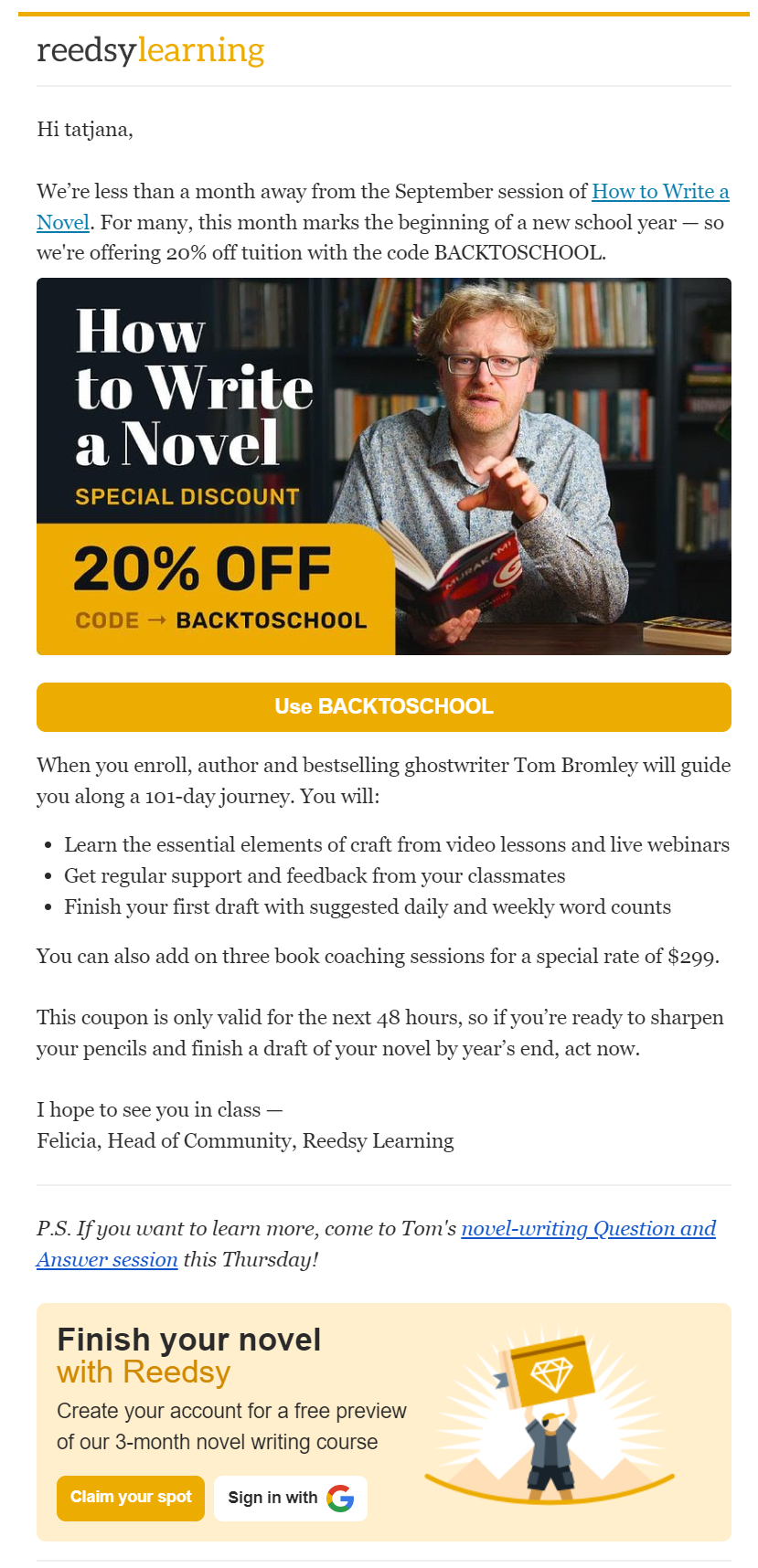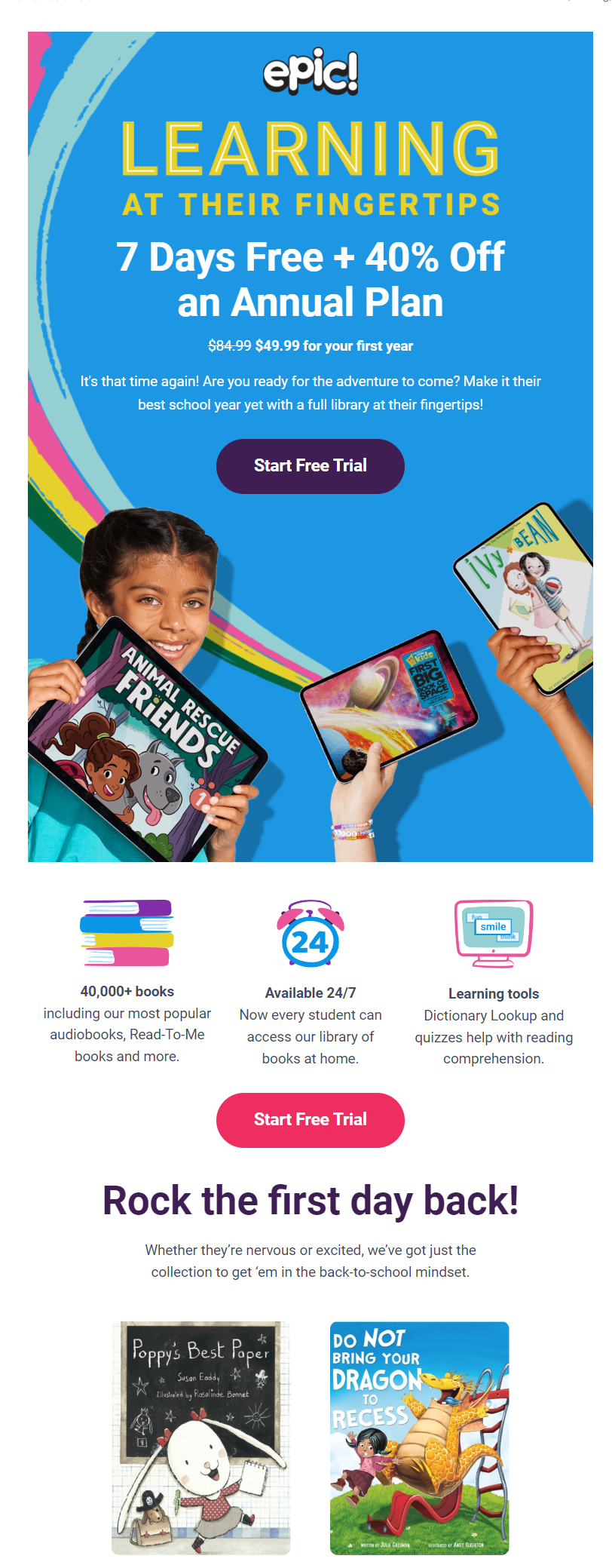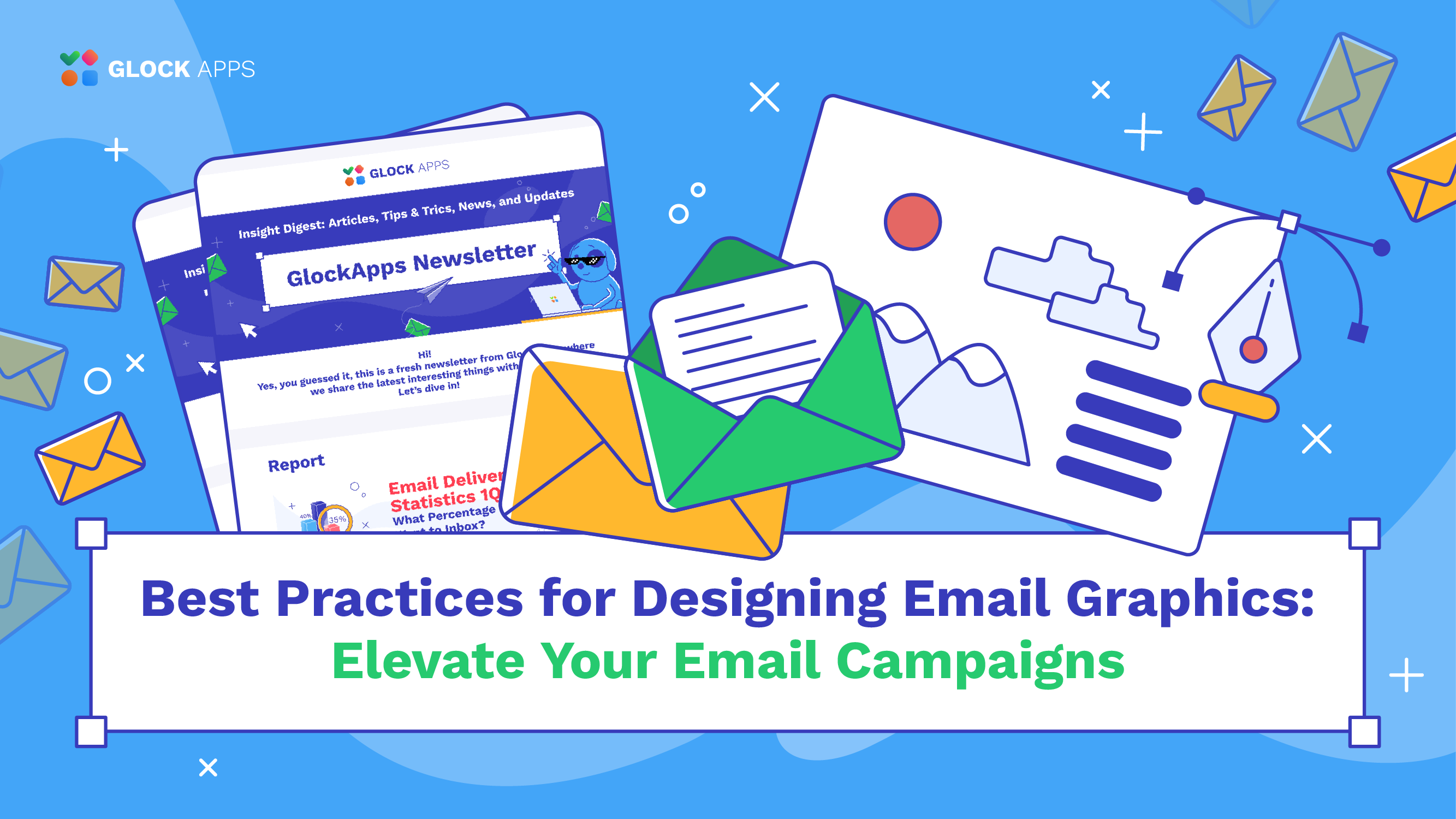Maximize Back-to-School Email Campaigns: Strategies and Tips

Estimated reading time: 5 minutes
With the back-to-school season coming up, the possibilities are endless for email marketers to capitalize on this stellar opportunity to connect with customers, build brand awareness, build loyalty, and increase sales. This period is not just about selling school supplies; it’s about tapping into the collective mindset of preparation, excitement, and new beginnings that families, students, and educators experience. By implementing targeted strategies and creative approaches, brands can effectively capture the attention of parents, students, and educators alike.
6 Tips For Back-to-School Email Campaign
Here are some tips to help you craft impactful back-to-school email campaigns that resonate with your audience:
1. Start Early and Stay Relevant.
Begin your promotions in July or early August so that you’re ahead of the pack. Early promotions also keep your brand top-of-mind when parents and students begin back-to-school shopping. Make sure your emails are culturally relevant by aligning with current trends that resonate with younger audiences, by incorporating pop-culture references to the latest movies, music, or social media trends that younger generations are following.
2. Segmentation and Personalization.
Target your messages to various segments of your audience, for example, parents shopping for kids of different ages, college students setting up a dorm room, and school teachers looking for classroom essentials. Targeted content improves engagement and conversion rates. For instance, offering college students special deals on electronics or offering stationery deals for elementary school kids can help drive targeted sales.
3. Master Subject Lines: Back-to-School Subject Lines Templates.
Create interesting subject lines that would encourage your recipients to open the emails. Here are some ideas:
“Ace the School Year with [Brand Name]”
“Back-to-School Savings: Up to 30% Off”
“Get Ready for Success: Shop Our Back-to-School Deals”
“Back to School, Back to Savings!”
“Must-Have Supplies for the New School Year”
4. Incorporate Interactive Elements.
Use an interactive element, like a countdown timer, a GIF, or a quiz This could be a GIF of a ticking clock to hype up a sale for a limited time. Interactive elements can help to keep people on the page and engaged longer than with static content, which increases the likelihood of them acting upon an offer. To ensure your interactive content displays correctly across all devices, try our HTML checker to optimize your emails for maximum impact.
5. Value-Added Content.
Don’t just sell — educate and inspire. Provide useful tips or advice, such as study hacks, healthy lunch recipes, or tips for managing back-to-school stress. For students looking to stay ahead academically, exploring the best online learning platforms and enrolling in math lessons for kids can provide flexible learning opportunities alongside their school curriculum. Informational content helps build trust and positions your brand as a helpful resource, not just a seller.
6. Offer Exclusive Discounts and Incentives.
Create a sense of urgency with limited-time offers, exclusive discounts, or early-bird specials. Offering free shipping or bundle deals can also incentivize customers to purchase more. Ensure your call-to-action (CTA) is clear and compelling, guiding customers directly to the checkout process.


Cultural Differences in Back-to-School Campaigns
Effective back-to-school campaigns need to be adapted to the cultural differences and regional markets. This process is called localization.
The essence of email marketing may be different in the US, for example. The back-to-school season occurs in the US in August or September when most students return to school for the academic year. In the US, the focus is on purchasing new clothing, electronics, and school supplies. However, in other countries, the timing and emphasis differ significantly.
For instance, in many parts of Europe, the school year starts later, and the focus may be more on practical items and educational resources rather than fashion or tech gadgets. The school year in Latin America might start in February or March.
In Japan, where respect for traditional values is of utmost importance, advertisements may focus on items that help to instill discipline and provide academic achievement, such as high-quality stationery or learning materials.
In turn, adapting back-to-school campaigns to linguistic, cultural, and regional differences will not only make the messaging more culturally relevant but also more likely to resonate with the target audience. By understanding and respecting these variations, brands can create more personalized and effective marketing strategies that cater to the unique needs and preferences of their global customers.
Conclusion
Back-to-school email campaigns are an excellent way to drive sales and connect with your audience during a peak shopping season. By starting early, staying relevant, and offering value beyond just promotions, your campaigns can stand out in the inbox and make a lasting impact.
With the right mix of personalization, creativity, and strategic planning, your back-to-school email campaigns can achieve impressive results. Test your deliverability now and make sure your campaigns are set up for success. Happy campaigning!
FAQ
Start your campaigns in July or early August to stay ahead of the competition and ensure your brand is top-of-mind when customers begin their shopping.
Use interactive elements like countdown timers, GIFs, and quizzes. Offering value-added content, such as study tips, can also keep your audience engaged.
Track key metrics like open rates, click-through rates, and conversion rates to make sure your back-to-school campaigns are performing the way they should.
Segment your audience based on factors like age, educational level, and location. Personalize content by offering targeted deals, such as discounts on electronics for college students or school supplies for younger children.



